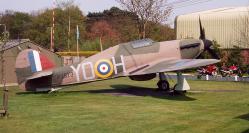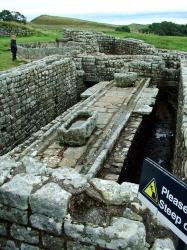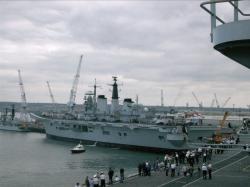Translate this Page
The Siege of Elizabeth Castle
Battle Name : The Siege of Elizabeth Castle
Date(s) : 24 October 1651 - 15 December 1651
Part of : The Civil Wars of the Three Kingdoms , The 3rd English Civil War ,
Outcome : A victory for Parliamentarian Expeditionary Force over Royalist regulars and militia
Type of battle : Land, Seige
Summary
Parliamentarian gunners overcame difficult odds and used heavy mortars to compel the surrender of one of the last surviving Royalist fortresses.
Location
St. Aubin’s Bay, Jersey (Channel Islands)
More details
Having rested his troops after the action at Les Mielles, Heane pressed inland, despatching his cavalry to summon Mont Orgueil Castle which surrendered two days later after its garrison mutinied. Meanwhile Heane demanded that St. Aubin’s Fort to give in which it did without a fight. He then moved on and occupied the town of St. Helier.
In the Bay was Elizabeth Castle where Sir George Carteret had taken refuge. Built on a rocky islet about half a mile out to sea and cut off by the tide twice a day, it was at the extreme range of Heane’s heaviest guns and nigh on impossible to carry by conventional storming. The Castle - in fact an Elizabethan gun fort built by Walter Raleigh - was on the site of a medieval abbey, of which only the church remained. This was being used as a powder store, because the magazines were flooded.
Heane summoned Sir George to surrender on the 24th - which the Cavalier politely declined to do - and began setting up batteries. He erected six, with a combined total of twenty one heavy siege guns, principally 36-pounder ‘Demi-Cannons Eldest’. Carteret was now blockaded, giving Heane time to prepare his secret weapons: his ‘Great Mortars’. These were operated by Firemaster Thomas Wright, Master Gunner of the Tower of London and one of the most respected artillerymen of his day. He was ably assisted by Firemaster’s Mate Richard Facey, also of the Tower.
The first two shots, fired on the 15th November by the middle of the three mortars, a 15 in 250-pounder, were packed with musket balls. The first shot hit an outer wall, the other fell short. Wright then switched to plain shell and put a shot straight through the roof of the church. The result was a catastrophic explosion that destroyed the church, killed 23 outright, fatally wounded another three and less severely injured 10 others. In addition months of stores and provisions were destroyed, including 30 tuns of cider, 12 tuns of sack, corn, biscuit and two years worth of dried fish. Worse still the Castle’s main water cistern was shattered. However, Carteret refused to give in and a fourth shot broke the mortar’s carriage. It was repaired and on the 18th five or six shots were fired, the first of which started a fire which burned for three quarters of an hour and destroyed yet more provisions.
The following day nine more shells were launched before the carriage broke again, this time more seriously. Repairs were not complete until the 8th December. Five shots were fired which destroyed some vessels in the Castle’s small harbour and then the carriage broke once more, this time irreparably. Whilst a new carriage was being built, Richard Facey and an assistant braved the fire from the Castle to board a vessel in its harbour and destroy it with incendiaries.
At this stage the Royalist position had become impossible and Carteret asked for terms. Over the next week surrender was thrashed out in intense negotiations, and the Castle formally submitted on the 15th December.
Subsequent consequences and any other information: Carteret, having paid a hefty fine, was permitted to flee to France. After the Restoration he attained high office as Privy Councillor, Vice-Chamberlain, Member of Parliament and Treasurer of the Navy where he was a colleague of Samuel Pepys.
The foreign troops made their escape by sea before the Castle’s official surrender, and the militia were allowed to go free. Jersey remained Parliamentarian until the Restoration in 1660. The mortars, cast by John Browne of Kent, had been intended to be used in an expedition to capture Castle Cornet in Guernsey but the mission was suspended and then cancelled after the required troops were withdrawn to take part in the Battle of Worcester, 3rd September 1651.
The Castle, though much altered by subsequent generations, is open to the public and includes many Civil War era features, including Fort Charles and Carteret's residence which Wright used as an aiming mark. There is a model of the Castle as it appeared in 1651, based on drawings made by Wenceslas Hollar.
Casualty figures
Parliamentarian Expeditionary Force
- Number engaged :
- 1,500
- Casualties :
- 1 (0.07%)
Royalist regulars and militia
- Number engaged :
- 442
- Casualties :
- 40 (9.05%)






